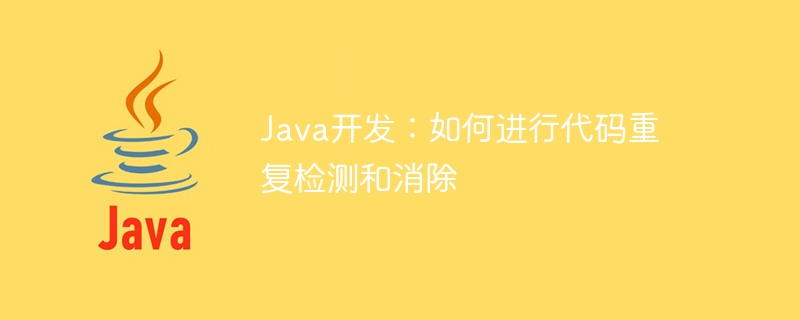

In Java development, code duplication is a common problem. When code is redundant or duplicated, it will not only increase the maintenance cost of the code, but may also cause potential bugs. Therefore, code duplication detection and elimination is very important.
So, how to detect and eliminate code duplication? The following will be introduced from two aspects: code static analysis tools and code refactoring.
Code static analysis tool is a tool that detects potential problems by analyzing and checking the code during the code writing and compilation process. Common code static analysis tools include SonarQube, Checkstyle, FindBugs, etc. These tools can help developers identify duplicated parts of the code and provide corresponding fix recommendations.
Take SonarQube as an example, it is an open source code quality management platform. It provides a powerful code static analysis function, which can scan Java code, detect redundant code, and display it in the form of reports. SonarQube detects code duplication by calculating code similarity. When duplicate code is found, SonarQube will give suggestions, such as extracting duplicate code to separate methods or classes, etc.
The following is a simple Java code example:
public class CodeExample {
public static void main(String[] args) {
System.out.println("Hello World!");
}
}Suppose we use the same string "Hello World!" in multiple places in this code, which belongs to the code repeat. Through SonarQube scanning, we can get the following report:
Avoid duplication of literals: "Hello World!" at line 4
SonarQube prompts us to extract the repeated string into a constant, and then reference the constant where needed to avoid duplication of code.
In addition to static analysis tools, code refactoring is also an effective way to eliminate code duplication. Code refactoring refers to improving the readability and maintainability of the code by modifying the internal structure of the code without changing the external behavior of the code. Common code refactoring techniques include refining methods, refining classes, extracting interfaces, etc.
Take the extraction method as an example. When we have the same functional code in multiple places, we can extract these repeated codes into an independent method for reuse. Here is an example:
public class CodeExample {
public static void main(String[] args) {
printMessage("Hello World!");
}
private static void printMessage(String message) {
System.out.println(message);
}
}By extracting the same printing functionality into a separate method printMessage, we can call the method where needed to avoid duplication of code.
When detecting and eliminating code duplication, you need to pay attention to the following points:
To sum up, by using code static analysis tools and code refactoring technology, we can effectively detect and eliminate code duplication. This can not only reduce the maintenance cost of the code, but also improve the readability and maintainability of the code, making our Java development more efficient.
The above is the detailed content of Java development: How to detect and eliminate code duplication. For more information, please follow other related articles on the PHP Chinese website!




